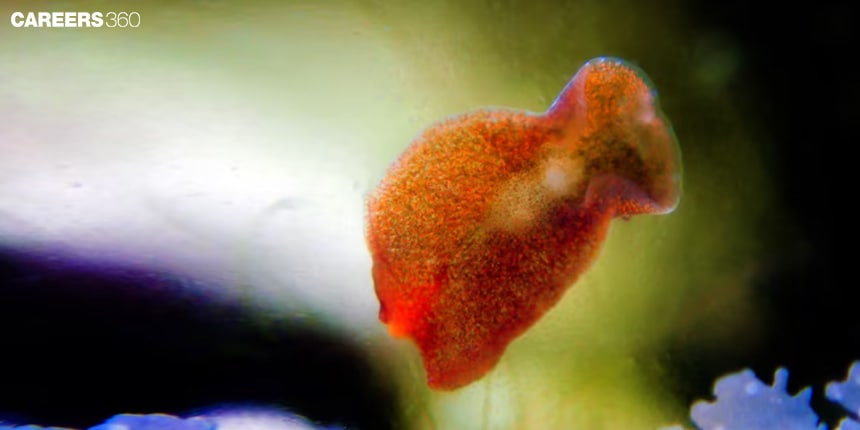Phylum Platyhelminthes: Characteristics, Examples, Platyhelminthes, Classification, Topics
Phylum Platyhelminthes, or flatworms, are bilaterally symmetrical soft-bodied acoelomates with a flattened body. General characteristics of Platyhelminthes include triploblastic structure, cephalization, and organ-level organization. Examples of Platyhelminthes include tapeworms, planarians, and flukes, whose lifestyles vary from free-living to parasitic. Platyhelminthes reproduce either through sexual or asexual means. Their classification is based on anatomy and ecology, sometimes represented through diagrams like that of the structures of a flatworm and a tapeworm. This is one of the topics of the Animal Kingdom Chapter in Biology.
NEET 2025: Mock Test Series | Syllabus | High Scoring Topics | PYQs
NEET Important PYQ's Subject wise: Physics | Chemistry | Biology
New: Meet Careers360 B.Tech/NEET Experts in your City | Book your Seat now
- What is Phylum Platyhelminthes?
- General Characteristics of Phylum Platyhelminthes
- Classification of Platyhelminthes
- Morphology and Anatomy
- Examples of Platyhelminthes
- Ecological and Economic Importance of Platyhelminthes

What is Phylum Platyhelminthes?
Phylum Platyhelminthes are more simply known as flatworms. They comprise a huge array of unicellular, bilaterally symmetrical, dorsoventrally flattened invertebrates. They are best known for their lack of body cavity, that is, the acoelomate condition, and the three germ layers from which tissues are derived. They contain free-living and parasitic forms, some of which have major effects on agriculture and human health.
Also Read
General Characteristics of Phylum Platyhelminthes
Bilateral Symmetry: Flatworms are bilaterally symmetrical, This means that their bodies are completely symmetrical with a left and right side.
Dorsoventrally Flattened Bodies: The body is flattened from the dorsal side to the ventral side, which gives the flatworm its characteristic thin and flat appearance.
Triploblastic: Flatworms undergo development with three main germ layers ectoderm, mesoderm, and endoderm as such, they are triploblastic.
Acoelomate: They have no body cavity, and organs are embedded solidly in tissue.
Simplified or Absent Digestive System: Generally, flatworms have an incomplete digestive system; there is only one opening, and some parasitic species lack a digestive system altogether.
Ladder-like Nervous System: They have a simple nervous system with two longitudinal nerve cords connected by transverse nerves it resembles a ladder.
Flame Cells (Protonephridia) for Excretion: Excretion and osmoregulation are carried out through specialised cells called flame cells, forming a network of protonephridia.
Diagram of Platyhelminthes
The diagram given below shows the internal body structure of Platyhelminthes

Classification of Platyhelminthes
Kingdom: Animalia
Subkingdom: Eumetazoa
Division: Protostomia
Overview of Classes
Turbellaria: Mostly free-living flatworms, such as planarians, common in aquatic and moist terrestrial environments. They are known for their regenerative powers and primitive organ systems.
Trematoda: A variety of parasitic flukes, some of which are liver flukes and others are blood flukes, which infest different hosts. In their complex life cycles, they have been known to infect sometimes two successive hosts, one of which is human, appointed as vectors of diseases like schistosomiasis.
Cestoda: Parasitic tapeworms that inhabit the intestines of vertebrates. Due to a lack of a digestive system, they absorb food from their surroundings directly through the skin. Most of the invasions have intermediate hosts in their life cycle that may cause diseases like taeniasis.
Morphology and Anatomy
The morphology and anatomy of flatworms evidence adaptation to different environments and various modes of life, from free-living to parasitic.
External Morphology
Flatworms come in a wide range of sizes and colouration. Their size runs from microscopic to several meters long.
Others have cilia to move around or a tegument that forms, comprising an outer protective layer found in the parasitic species.
Internal Anatomy
Digestive System: Incomplete, with a single opening serving as both mouth and anus.
Nervous System: Ladder-like structure with paired nerve cords and transverse connections.
Excretory System: Consists of flame cells (protonephridia) for osmoregulation and excretion.
Reproductive System: Most of the flatworms are hermaphrodites. This means they bear both male and female reproductive organs.
Examples of Platyhelminthes
Parasitic flatworms can have a huge impact on human health through diseases and economic losses in agriculture.
Trematoda (Flukes)
Examples: Schistosoma (blood fluke), Fasciola (liver fluke)
Pathogenic Effects and Diseases: Schistosomiasis, fascioliasis
Cestoda (Tapeworms)
Examples: Taenia (tapeworm), Echinococcus (hydatid tapeworm)
Pathogenic Effects and Diseases: Taeniasis, echinococcosis
Ecological and Economic Importance of Platyhelminthes
The Platyhelminthes play important ecological and economic roles because its members, indirectly or directly interact with other organisms.
Role in Ecosystems
Flatworms play an important role in their ecosystem as predators and prey in balancing the diversity of certain biological communities. They are predators of smaller invertebrates and thus help in population control. In addition, while flatworms consume detritus and other different decaying matter, they serve to break down and recycle organic material, thereby raising the input of nutrients into their environment.
Economic Impacts
Parasitic flatworms impart a huge healthcare cost to humans by causing schistosomiasis and taeniasis in human beings, which require medical treatments and public health interventions. In agriculture, infections caused by these parasites in livestock, especially by liver flukes and tapeworms, reduce productivity and lower the quantity of meat and milk yielded by these animals, thereby increasing the expenses of veterinary care. Therefore, these factors result in a huge economic loss.
Also Read
Recommended Video for Platyhelminthes
Frequently Asked Questions (FAQs)
They are flat, bilaterally symmetrical, triploblastic, and acoelomate. They have a simplified digestive system with a ladder-like nervous system and flame cells for excretion.
The life cycle of the liver fluke, Fasciola hepatica, hatch into larvae that infect an intermediate snail host and mature as adults in the liver of mammals.
Flatworms are known to be both asexual - reproducing by regeneration and fission - and sexual reproduction by cross-fertilisation with developmental stages such as egg, larva, and adult.
Examples include liver flukes (Fasciola), blood flukes (Schistosoma), and tapeworms (Taenia and Echinococcus).
Two parasitic flatworms give rise to diseases like schistosomiasis and taeniasis that lead to high morbidity, resulting in a high level of morbidity. In many instances, these diseases require individual medical treatment and public health interventions.
Also Read
29 Nov'24 12:52 PM
26 Nov'24 04:23 PM
26 Nov'24 04:19 PM

